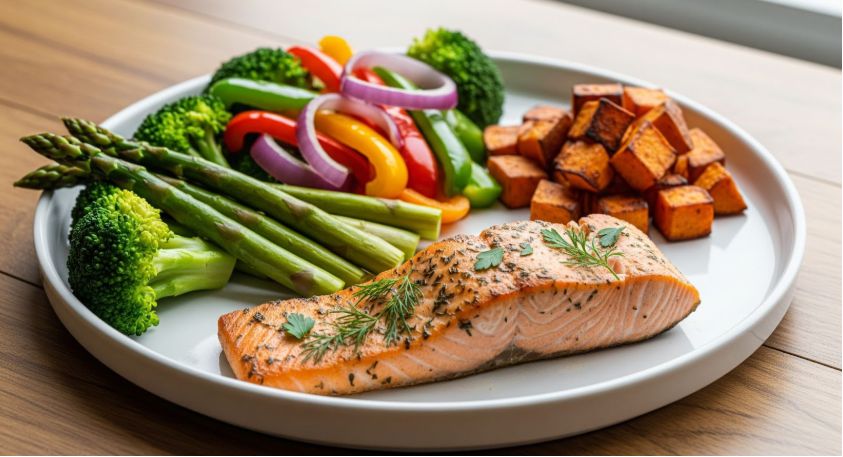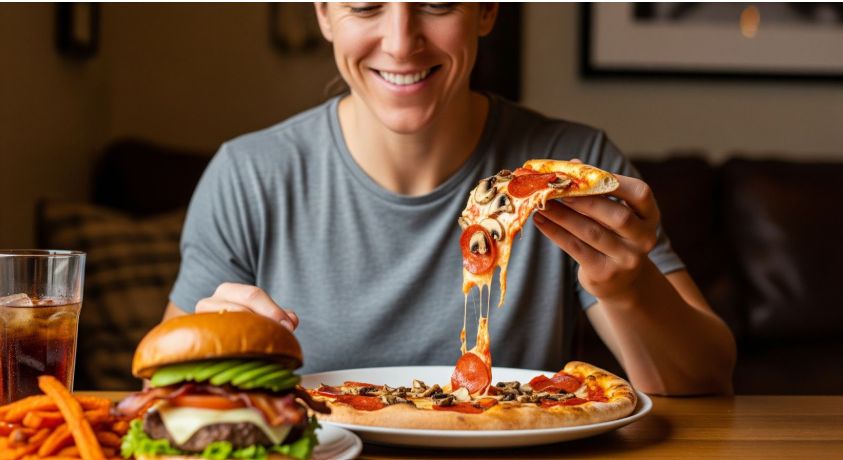
I’ll be honest—I love food. As much as I train hard, sometimes I just need a break from the grind and indulge in something that feels like a treat. Whether it’s pizza after a hard workout or a bowl of ice cream on a Sunday, I’ve learned that cheat meals, refeeds, and diet breaks aren’t just about satisfying cravings.
They’re powerful tools when used correctly, and they can play a big role in your fat loss and muscle-building journey.
But how do they actually fit into the bigger picture? Are they just a chance to binge without guilt, or do they have legitimate benefits for your fitness goals? Let’s break down each one and see how they really work in the world of nutrition.
What Is a Cheat Meal, and Does It Help or Hinder Progress?
Let’s start with cheat meals. These are the go-to for anyone who feels like they’ve been too strict with their diet and needs a mental and physical break. But here’s the deal: cheat meals are about balance, not excess.
A cheat meal is usually a single meal where you step outside your typical eating pattern. Think pizza, burgers, or maybe that slice of chocolate cake. It’s not about going all-in and eating an entire pizza every night, but having something you enjoy without the guilt.
When used correctly, cheat meals have their place in your routine, especially for people on strict calorie-controlled diets like intermittent fasting or keto.
So, how do cheat meals actually help?
- Psychological Boost: Sticking to a restrictive diet all the time can be mentally exhausting. A cheat meal can help prevent burnout by giving you a break while still staying within your long-term goals.
- Leptin Levels: Over time, calorie restriction can lower leptin, a hormone that helps regulate your metabolism. A well-timed cheat meal can temporarily boost leptin levels, keeping your metabolism functioning optimally.
- Social Flexibility: Let’s face it: social situations are tough when you’re dieting. A cheat meal allows you to enjoy gatherings without feeling isolated or overly restrictive.
The key to cheat meals is moderation. If you’re overindulging every weekend, then they could hinder your progress. But used strategically, they can keep your fat loss goals on track.
What’s the Difference Between a Cheat Meal and a Refeed?

Now let’s talk about refeeds. While a cheat meal is more of a spontaneous indulgence, a refeed is more planned and specific.
A refeed usually involves increasing your carbohydrate intake for a day to boost glycogen stores in your muscles and give you a boost of energy. It’s often used during a fat loss phase when you’ve been in a calorie deficit for a long time.
Why should you incorporate refeeds?
- Glycogen Replenishment: After several days of lower carbs and calorie restriction, your glycogen stores (the energy stored in your muscles) become depleted. A refeed helps replenish those stores, so you feel more energized for your workouts.
- Hormonal Balance: Long-term calorie restriction can decrease your levels of hormones like leptin and thyroid hormones, which affect metabolism. A well-timed refeed can help restore these hormones, making it easier to continue losing fat without your body going into a metabolic slowdown.
- Improved Performance: After a refeed, you’ll likely notice better workout performance because you’ve replenished your energy stores, making it easier to lift heavier or perform better in high-intensity training.
Refeeds are typically done once a week or once every 2-3 weeks, depending on your diet, goals, and activity levels. The key is to focus on carbs for the refeed, not fats or proteins.
What About Diet Breaks? How Do They Fit In?
So far, we’ve covered cheat meals and refeeds, but diet breaks are a bit different. A diet break is exactly what it sounds like—taking a break from your diet for a period of time, usually a week or two. It’s often recommended after a prolonged period of dieting to allow your body and mind to reset.
But don’t mistake a diet break for an excuse to go on an all-out binge. A diet break is about restoring balance, not completely abandoning your progress. Here’s why diet breaks work:
- Psychological Reset: Constantly tracking your food and sticking to a rigid diet can become mentally exhausting. A diet break helps you avoid burnout and reestablish a healthy relationship with food.
- Metabolism Boost: Just like refeeds, diet breaks help restore hormones like leptin and ghrelin, which control hunger and metabolism. Giving your body a break can help prevent the metabolic slowdown that often happens after long periods of calorie restriction.
- Better Adherence: After a diet break, you’ll often find that you’re more motivated to return to your diet and training plan, which helps you stay consistent over the long term.
Diet breaks are usually taken after several weeks or months of consistent dieting and should be used strategically, not just whenever you feel like it. It’s about creating a balanced, sustainable approach to dieting that doesn’t leave you feeling deprived.
How to Use Cheat Meals, Refeeds, and Diet Breaks for Fat Loss

When you use cheat meals, refeeds, and diet breaks in combination, they can actually work in your favor to support fat loss, muscle retention, and overall health. Here’s a basic roadmap for incorporating these tools:
- Plan Your Meals: Incorporate cheat meals once every 1-2 weeks. They should be scheduled and not random. If you’re craving pizza, plan for it!
- Strategize Your Refeeds: If you’ve been in a calorie deficit for a while, schedule a refeed every 7-14 days. Focus on high-carb days to replenish energy stores and boost metabolism.
- Take a Break When Needed: After 8-12 weeks of consistent dieting, consider a 1-2 week diet break. Increase your calories back to maintenance level, but still focus on healthy, nutrient-dense foods.
This combination of methods helps keep your body from hitting a plateau while allowing for flexibility and enjoyment in your diet.
FAQ: Cheat Meals, Refeeds, and Diet Breaks
1. How often should I have a cheat meal?
Cheat meals are great for breaking up the monotony of strict dieting. Aim for 1-2 cheat meals per month if you’re on a long-term fat loss phase. Don’t overdo it, as too many cheat meals can set back your progress.
2. Can I have a refeed if I’m not on a strict diet?
If you’re not in a calorie deficit, you likely don’t need a refeed. Refeeds are more beneficial for those who have been dieting for an extended period and need to restore energy and hormone balance.
3. What’s the best time to take a diet break?
You should consider a diet break after several weeks of consistent calorie restriction. If you’re feeling mentally fatigued or your progress has stalled, it might be time for a short break.
4. Can cheat meals and refeeds help with muscle gain?
Yes! Both cheat meals and refeeds can help preserve muscle while dieting. They provide your body with the necessary energy and hormones to keep muscle mass intact while burning fat.
Keep It Balanced and Sustainable
At the end of the day, the key to long-term success is balance. Cheat meals, refeeds, and diet breaks aren’t just excuses to overeat—they’re strategic tools to enhance your fat loss and muscle retention journey. Used correctly, they can keep you motivated, energized, and moving closer to your goals.
So, the next time you’re debating whether or not to have that cheat meal, remember—it’s all about moderation and making sure it fits within your bigger picture. Keep things balanced, listen to your body, and stay consistent. You’ve got this!


